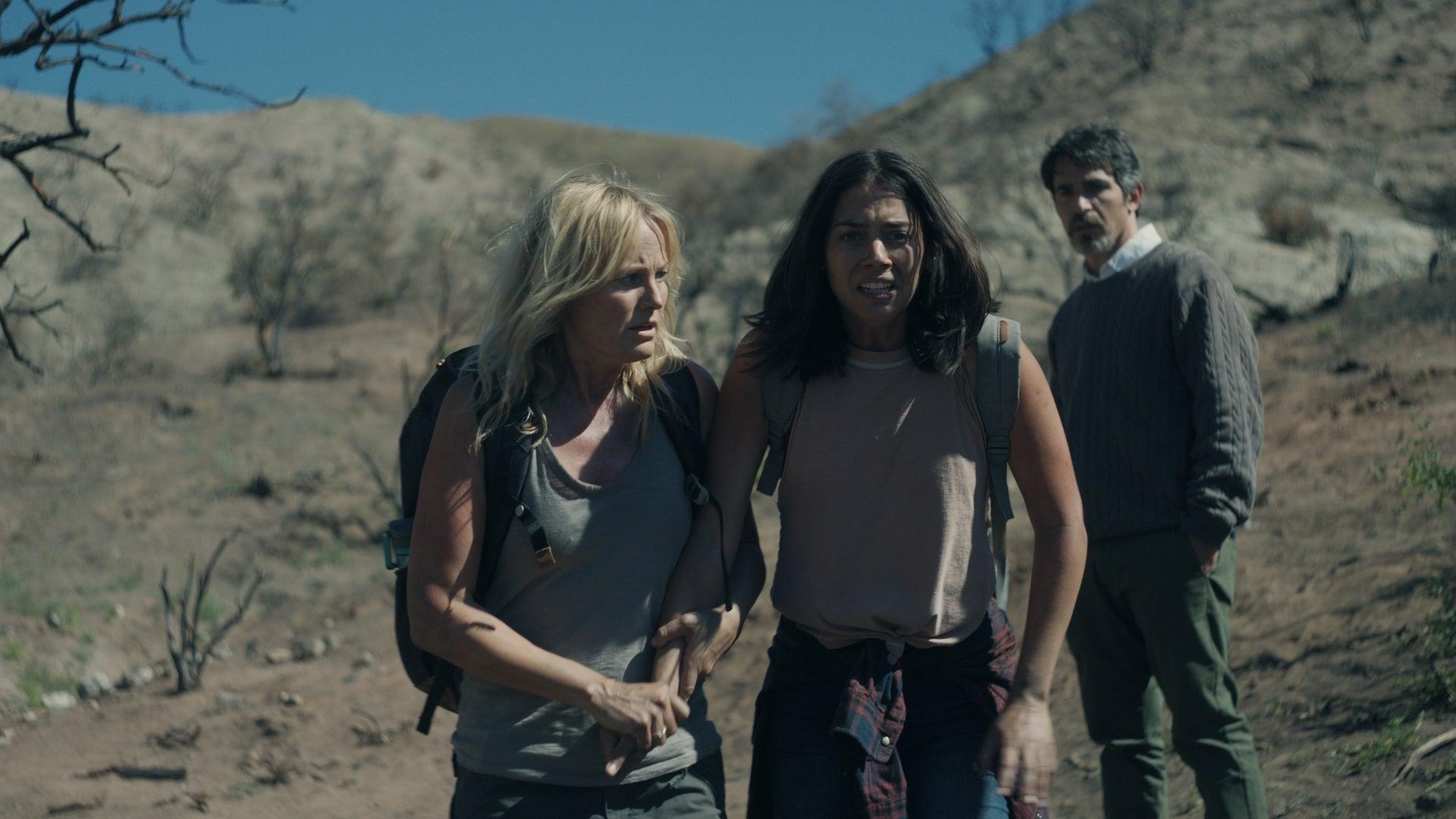In The Aviary, Malin Akerman and Lorenza Izzo flee a cult leader’s mesmerizing control
Two traumatized women fly the coop in this spellbinding, sun-bleached survival story

Films featuring unreliable narrators can be tricky to pull off, as they take innovative narrative risks. They task the audience to balance precariously on a high wire along with the protagonist, who’s navigating a taut psychological mystery in an attempt to make sense of their topsy-turvy world. When done correctly, there are thrilling benefits to behold, enrapturing those who’ve taken that guided journey. Writer-directors Chris Cullari and Jennifer Raite give us two unreliable narrators to follow on a similar, intertwined path to personal, earth-shattering discovery in The Aviary—and the results make for a visually striking, sonically spooky, and deeply unnerving picture.
“What’s in the way of your joy today,” a man’s calm, comforting, disembodied voice asks. It’s the daily question plaguing both Jillian (Malin Akerman) and Blair (Lorenza Izzo) during their years under the control of Svengali-like cult leader Seth (Chris Messina). He’s set up a New-Age-style compound nicknamed The Aviary, nestled in a parched New Mexico landscape. Here, he practices the teachings of Skylight, his own cult doctrine cloaked as hipster self-help. His promises of unlocking potential have attracted everyone from trust-fund babies (like Blair) to altruists seeking enlightenment (like Jillian). In this isolated, austere space, he puts his flock of female believers through intense physical and psychological challenges to prove their devotion to him. The story begins as the pair are forced to flee from him in the dark of the night.
As Jillian and Blair set out to find civilization and regain their humanity, purging themselves of the torture they’ve endured, they quickly realize they must also come to grips with their motives for escaping Seth’s grasp. For Blair, it’s a revenge-fueled mission towards freedom. For Jillian, it’s a means to apologize to her best friend Delilah (Sandrine Holt), the former Skylight co-leader who’s mysteriously gone missing after voicing doubts about Seth and his methods. With only three days of supplies, an outdated map, and Jillian’s Girl Scout training to rely on, the dynamic duo are positive they’ll be able to survive the 30-mile hike to town. What they don’t account for are night terrors and the long-lasting anguish that continues to mess with their mental acuity.
Cullari and Raite’s strong suit is building their characters as intriguing, fallible folks, evolving and uncovering their hidden strengths. This applies equally to their protagonists, who strive to triumph over adversity, and their antagonist, whose powerful command grows more dangerous though he superficially appears harmless. The atmospheric pull of paranoia and distrust is engrossing and enticing. There’s a distinct, fascinating interplay between the trio, both in the way Seth’s presence is felt through Jillian and Blair’s decisions and phrasing, and when he physically manifests in their hallucinogenic nightmares and daydreams. Character reveals aren’t about cheap shocks, but rather slow burns. They’re perfectly placed, leading to a brisk pace that never suffers from any lulls in energy. Astute, sharpened commentary on women forming their identity outside of the male gaze is tucked away in the narrative’s underpinnings.
Akerman’s compelling sense of nuance and vulnerability works brilliantly, particularly when we’re questioning if her character is duplicitous or sincere – or a mix of both. Izzo turns in restrained work, cleverly modulating her character’s brash, impulsive and hysterical overtones. Messina’s calculating figurehead is a wolf in sheep’s clothing—or rather a wolf in Gap clothing, outfitted in unassuming white-collared shirts, cable-knit sweaters and khaki pants. He’s caustic, but captivating.
While the drama mostly stays insular, the filmmakers give it a grander scope in their imagery. They exercise gorgeous visual dexterity, allowing aesthetic flourishes to complement their themes. Mind-melting nightmare sequences, featuring flashing lights, disarming static shots and unsettling jump cuts, visually contextualize their characters’ tormented, fractured psyches. Cinematographer Elie Smolkin, editor David Bilow, and the sound design team conduct an electrifying charge during these character-driven and destabilizing segments. Zac Clark’s score plays like a creepy lullaby, lulling us into a false sense of safety.
Though it keeps audience confusion to a minimum, especially during the trippy sequences, the film occasionally finds itself in the weeds. More than a few predictable plot points surface, involving the inevitable dwindling food and water supply, the situational obstacles, and the womens’ conflicts with each other. The climax, while smart and satiating, experiences some trouble connecting its themes, relying on the clumsy convenience of a dreaded deus ex machina.
Still, despite a few blights, this gem refracts light beautifully. Layered with thought-provoking questions about the nature of self, coping during extreme crisis and healing from trauma, the cage crafted is claustrophobic and expansive all at the same time.